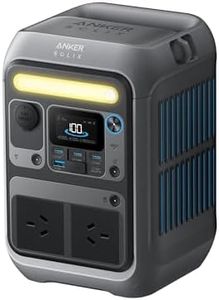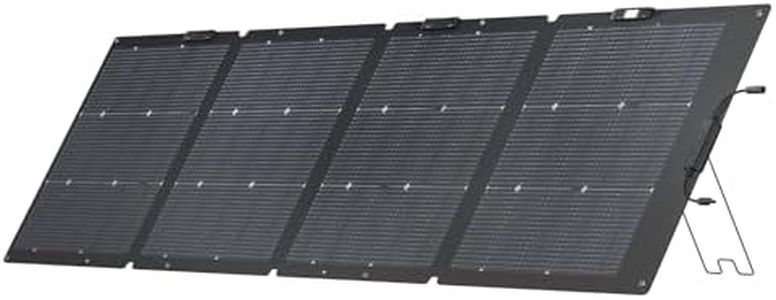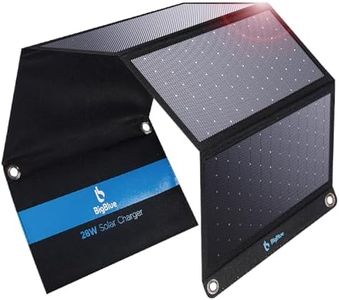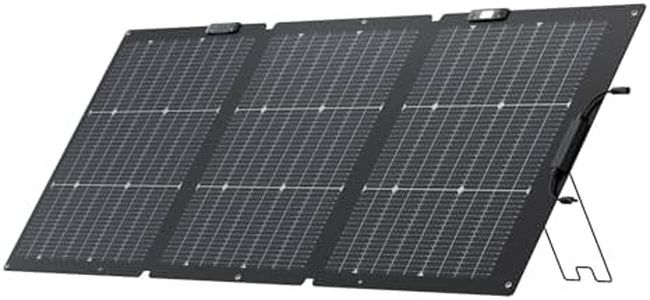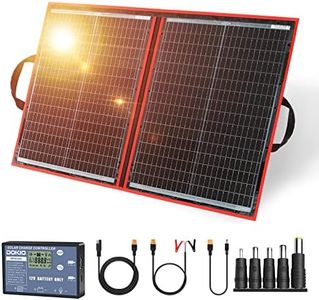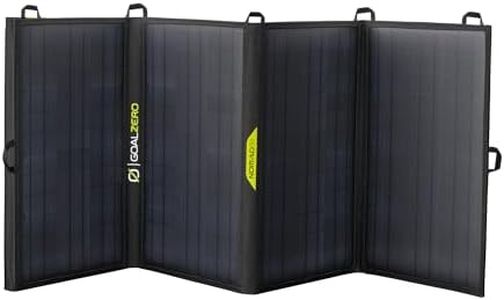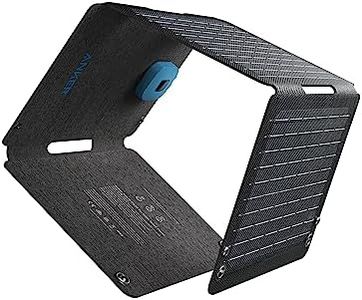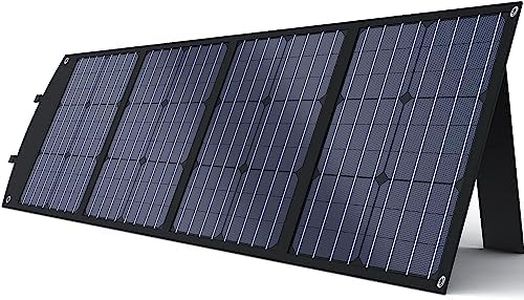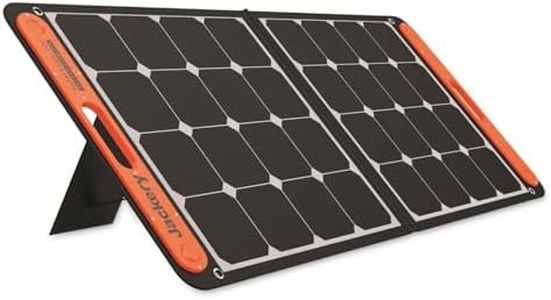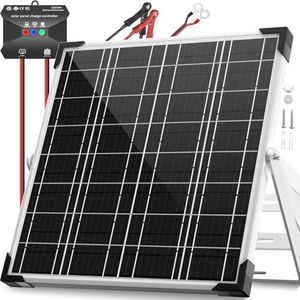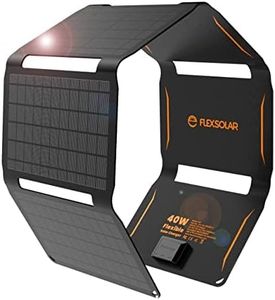We Use CookiesWe use cookies to enhance the security, performance,
functionality and for analytical and promotional activities. By continuing to browse this site you
are agreeing to our privacy policy
10 Best Solar Chargers
From leading brands and best sellers available on the web.Buying Guide for the Best Solar Chargers
Solar chargers are a fantastic way to harness sunlight to keep your devices powered up, whether you're camping, hiking, or just preparing for a power outage. Choosing the right solar charger can feel confusing, but approaching it step by step helps. Consider where you will use it most (outdoors, travel, home backup), what devices you want to charge (phones, tablets, small gadgets), and how often you'll need it. By understanding the important features, you can match a charger’s capabilities with your lifestyle and charging needs.Power Output (Wattage)Power output, measured in watts (W), tells you how much electricity the solar charger can produce. This is important because higher wattage chargers can power up larger devices or charge multiple items more quickly. Solar chargers usually range from around 5W (suitable for small devices and slow charging) up to 30W or more (good for tablets and quicker charging). If you just need to top up your phone while hiking, a smaller output is fine. But if you want to charge more power-hungry devices or several gadgets at once, aim for a higher wattage. Think about what gear you'll need to charge the most often and let that guide your choice.
Portability and SizePortability refers to how easy it is to carry your solar charger, and this usually depends on its size and weight. Larger panels tend to deliver more power but can be bulky or heavy, while smaller panels are easy to pack but may charge more slowly. There are compact foldable models for light travelers or backpackers and bigger, more sturdy ones for campers or stationary use. Decide if you'll need to fit it in a backpack, hang it from a tent, or keep it in your car. Your main use-case—regular travel versus emergency kit—will help you decide how much portability matters.
Charging Ports and CompatibilityCharging ports are the outputs on the solar charger, often USB or sometimes others like DC or USB-C. Having multiple or varied ports means you can charge different devices at the same time or charge gadgets that use different connectors. The quantity and type of charging ports should match what you plan to use. For most users, USB ports are essential. Check what devices you need to charge—if they're all USB-compatible, simple is best; if you have laptops or specialty electronics, ensure the charger can support those connections.
Conversion EfficiencyConversion efficiency is how well the solar charger turns sunlight into usable electricity, given as a percentage. Higher efficiency means the charger works better under less-than-perfect sunlight, like cloudy weather or partial shade. Most consumer solar chargers offer efficiency ratings from about 15% to 25%. If you plan to use the charger in areas with variable sunlight or want to maximize charging speed, look for higher efficiency panels. If your usage is mostly in bright, direct sun, this is less critical.
Durability and Weather ResistanceDurability is about how well the charger holds up to drops, bumps, and rough handling. Weather resistance covers how well it deals with elements like rain, dust, or splashes. These qualities are crucial if you plan to use the charger outdoors often. Look for rugged designs and consider whether you need water resistance (often marked as 'IP' ratings). For casual, indoor, or fair-weather use, you might not need top-end durability, but outdoor adventurers should prioritize this feature.
Built-in BatterySome solar chargers have a built-in battery, so they can store energy as they collect sunlight, letting you charge your devices even when the sun isn’t shining. This is useful if you need to charge devices during the evening or cloudy periods. The battery size is usually measured in milliamp-hours (mAh). For those who just want on-demand charging while the sun’s out, a charger without a battery is lighter and simpler. For those who want flexibility or may be away from the charger at peak sun hours, a built-in battery is a great convenience.
